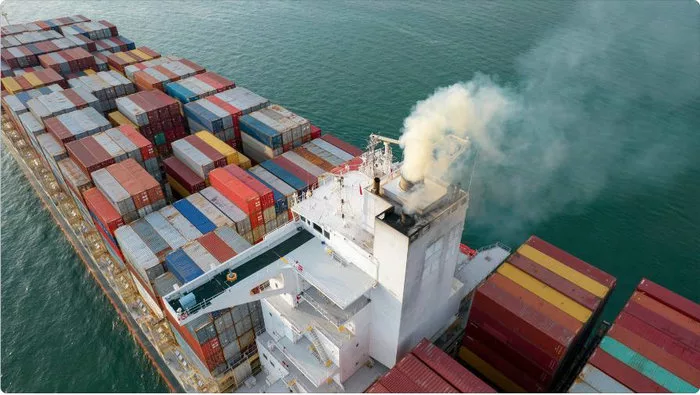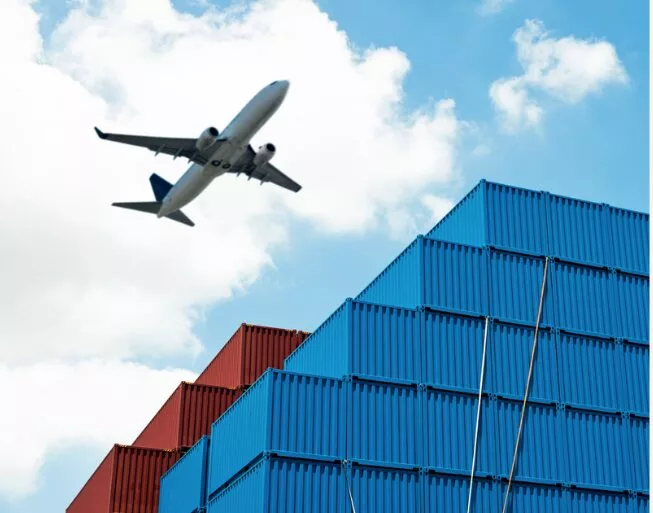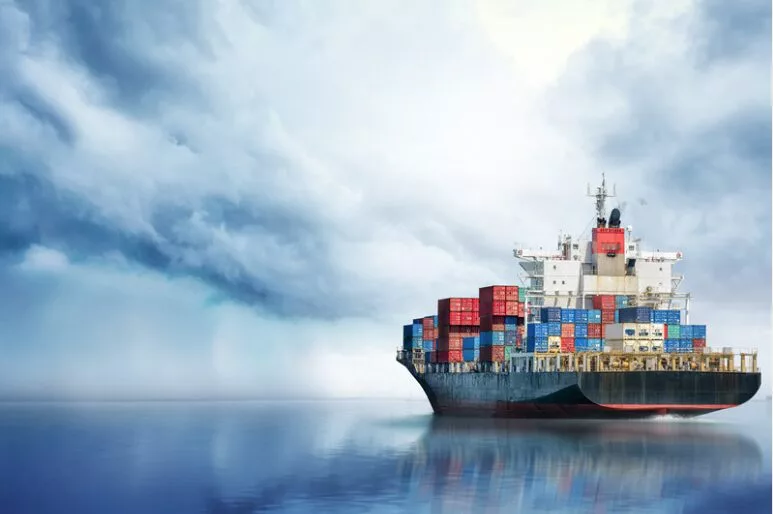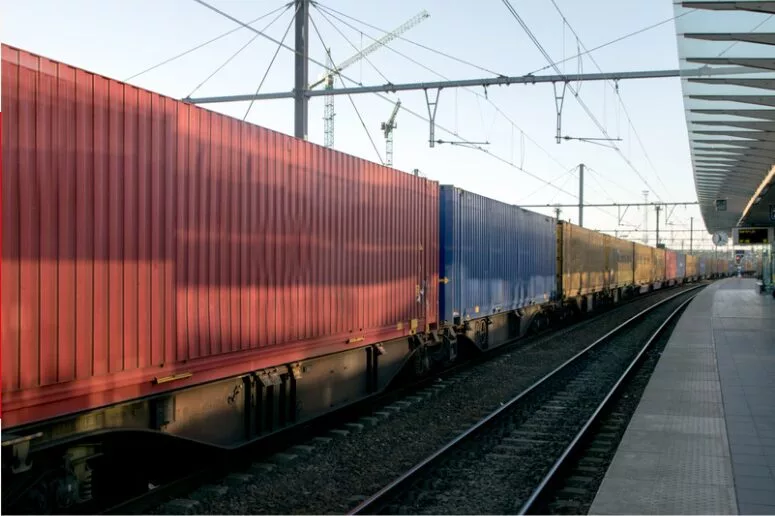
China is one of the top manufacturing hubs globally, while Switzerland offers access to major European markets. As such, shipping goods from China to Switzerland is a common scenario for many exporters and importers. When transporting cargo from China to Switzerland, there are three main shipping methods: air, ocean, and rail.
Shipping from China to Switzerland involves navigating a complex web of logistics, customs regulations, and handling requirements. Unlike countries within the European Union, Switzerland has specific customs procedures that you must comply with to avoid delays or additional costs.
To ensure a smooth transition of your items across international boundaries, here are some things you need to consider:
- How much does it cost to ship goods from China to Switzerland?
- What are the advantages and disadvantages of the three shipping options?
- What regulations must be noticed, and what documents are required for shipments from China to Switzerland?
- Why do you need an agent or freight forwarder?
This article offers a comprehensive guide on the optimal practices for shipping freight from China to Switzerland.
Air Freight Shipping from China to Switzerland

Transit Route and Delivery Time
Air freight provides the fastest shipping service from China to Switzerland, although it has higher shipping costs. The typical transit times for air shipping from major Chinese airports to Switzerland are:
| Origin Airport | Destination Airport | Transit Time |
|---|---|---|
| Shanghai | Zurich | 3-5 days |
| Beijing | Zurich | 4-6 days |
| Guangzhou | Zurich | 4-6 days |
Costs of Shipping
- Standard air freight rates range from around $3-5 per kilo from China to Switzerland. Rates for faster express air services are higher at $5-7 per kilo.
- Air shipping prices are influenced by weight/dimensions, speed, type of goods, seasonality, etc. Heavier shipments and faster transit times cost more.
- Precise air freight pricing depends on specific shipment details and is best obtained by contacting an agent directly. Quotes consider cargo details, routing, services required, etc.
Pros and Cons
Benefits of air freight:
- Faster delivery times – Air freight provides the quickest delivery of all shipping modes, with transit times from China to Switzerland averaging 2-5 days versus 20-45 days by sea. This enables urgent shipments or just-in-time inventory management.
- Accessibility – Air freight offers access to landlocked Switzerland, unlike sea shipping, which has geographical constraints. This expands trade opportunities.
- Reliability – Air freight sees lower risks of delays/disruptions versus sea, with more direct routing and fewer handling stages. This reliability also lowers insurance costs.
- Lower storage needs – Air freight shipments spend less time in transit versus sea cargo, reducing inventory holding/storage requirements.
- Transport of high-value goods – Despite higher base shipping costs, air freight economically transports lightweight, valuable cargo like pharma and electronics.
Drawbacks encompass:
- High cost – Air freight has significantly higher shipping rates compared to sea or rail, often 5-10 times more costly. This can eat into profit margins.
- Weight and size limits – Air freight has more constraints in terms of maximum weights and dimensions per piece/package, which may not suit oversized cargo.
- Limited capacity – Passenger air traffic gets higher priority, which can lead to shortages in cargo capacity at busy times.
- Customs delays – Air express shipments tend to receive more customs scrutiny, which can cause slight delays in some cases.
- Environmental impact – Air freight has a higher carbon footprint than sea or rail, making it less eco-friendly.
Recommendations for When to Use Air Freight
- When speed is critical – Air freight is the fastest shipping method and can deliver goods globally within 1-5 days typically. It’s ideal for time-sensitive cargo like perishables, medical supplies, spare parts, etc.
- For high-value, low-weight items – The higher costs of air freight make sense for lightweight but valuable goods like electronics, pharmaceuticals, fashion items, etc. Air freight costs are calculated by weight.
- For smaller-sized shipments – Air freight has more constraints on dimensions than sea or rail. It works well for smaller consignments that can fit on pallets or smaller containers. Oversized cargo may not fit on aircraft.
- When inventory needs precise timing – Air freight offers the most predictable delivery, enabling tight inventory management and just-in-time arrivals to meet production schedules. One example is the e-commerce sector, which leverages air transport for faster inventory replenishment despite higher parcel shipping costs.
- To diversify risk – Using air freight for some goods can hedge the risk of long overseas transit delays. Air reduces the likelihood of stockouts from shipment disruptions.
Ocean Freight Shipping from China to Switzerland

Transit Route and Delivery Time
Ocean freight is the most common method for shipping large volumes of goods from China to Switzerland. It is the cheapest shipping service but offers longer shipping times compared to air freight. Typical sea freight transit times from major ports in China to Switzerland are:
| Origin Port | Destination Port | Transit Time |
|---|---|---|
| Shanghai | Basel | 30-45 days |
| Shenzhen | Basel | 35-45 days |
| Ningbo | Basel | 30-40 days |
Switzerland is a landlocked nation. Although there is a container port on the River Rhine at Basel, it is common to ship products from the Chinese ports to Duisburg in Germany. Then, the goods will be sent by river, rail, or truck to Switzerland.
- Total rail transport from Shanghai to Duisburg, Germany takes 15-20 days
- Then additional 5-10 days for the last leg by truck/barge to Basel
- Complete transit time is around 20-30 days from Shanghai to Basel
Costs of Shipping
- Full Container Load (FCL): FCL shipping refers to a shipping arrangement where an entire container is exclusively used to transport a single shipper’s cargo. Shipping a full 40-foot container from China to Switzerland by sea costs an average of between $3,000 and $8,000.
- Less than container load (LCL): LCL involves consolidating multiple small shipments from different shippers into a single container. LCL shipping costs around $1,150 for a 20-foot container equivalent.
Advantages of ocean freight include:
- Lower cost – Ocean shipping costs significantly less than air freight, with an estimated 80-90% savings on shipping rates. This makes it more affordable for higher volume or heavy goods.
- Higher capacity – Container ships can carry vastly greater volumes and weight quantities than planes.
- Environmental sustainability – Ocean freight has lower carbon emissions compared to air transportation. This offers a reduced environmental impact.
- Established trade routes – Major ports like Shanghai, Shenzhen, and Hong Kong have frequent container ship routes to Europe via the Suez Canal. This facilitates accessible transport.
Disadvantages include:
- Slow transit times – Ocean shipping takes much longer (23-45 days on average) compared to 2-5 days by air or 15-20 days by rail. This can increase lead times.
- Route inflexibility – Ocean containers must transit through ports like Hamburg or Rotterdam before intermodal transport to landlocked Switzerland. This involves more handling stages.
- Risk of delays – Long overseas journeys increase the likelihood of weather/port congestion issues causing delays. Companies have less control over such external disruptions.
- Size and weight constraints – Oversized or burdensome cargo may exceed container dimensions or vessel/truck weight limits. Special gear may be needed.
- Difficult tracking – Precise real-time monitoring and visibility can be lacking compared to air freight.
Recommendations for When to Use Ocean Freight
- For non-urgent shipments where longer transit time is acceptable, – Ocean freight takes 23-45 days on average, which works for cargo without tight delivery constraints.
- When shipping high volume or heavy goods due to capacity – Ocean containers carry more volume and weight than air or rail, enabling economies of scale.
- For cost-sensitive cargo where budget is a main driver – Ocean freight costs 80-90% less than air freight, providing significant savings.
- If environmental sustainability is essential – Ocean shipping has lower carbon emissions, reducing environmental impact.
- When the origin/destination is not accessible overland – Ocean containers can be transferred to rail/truck for Swiss final delivery.
Industries that commonly use ocean freight from China to Switzerland include:
- Automotive
- Machinery
- Consumer goods
Ocean freight is often used for seasonal stock-ups and large-volume shipments for eCommerce businesses.
Rail Freight Shipping from China to Switzerland

Rail freight provides a good compromise between air and sea shipping for goods imported from China to Switzerland. It offers faster transit times compared to ocean freight while being more affordable than air freight.
Transit Route and Delivery Time
There is currently no direct rail route between China and Switzerland. Trains first pass through major stations in Germany like Nuremberg, Hamburg, and Duisburg. Containers are transported by rail or road from these stations to destinations across Switzerland, such as Basel. Rail freight from China to Switzerland takes 15-20 days on average. Key steps include:
- Trains run 800-1100 km daily in China and Russia
- Two reloads at borders in China and Belarus
- Arrival at European hubs like Germany
- Onward transport to Switzerland
Costs of Shipping
- For a shipment covering 8,000 km, rail freight costs around $80 per cubic meter from China to Switzerland.
- Shipping a full 40-foot container (FCL) by rail from China to Europe costs approximately $10,000.
- The average price of rail freight for less than container load (LCL) goods, including customs and duties, is around $2 per kg.
- Rail freight is cheaper than air shipping (which costs $11-$15 per kg) but more expensive than sea shipping (a 40-ft container costs $4,000-$8,000 by sea.
Pros and Cons
Advantages of rail freight on the China-Europe route:
- Faster transit time than sea freight – Rail takes 15-20 days on average, compared to 23-45 days for ocean shipping. This provides quicker delivery.
- Lower cost than air freight – Shipping a 40ft container by rail costs around $10,000 versus $32,000 by air. Rail offers cost savings.
- Higher reliability than other modes – Rail freight sees fewer delays and disruptions versus sea or air. This enables predictable delivery.
- Environmentally friendly – Rail shipping produces nearly 80% less CO2 emissions per container than air. This offers sustainability.
- Ability to carry heavy/large cargo – Rail transports weighty machinery, vehicles, and industrial parts efficiently.
Disadvantages include:
- Intermodal handling required – Rail containers from China cannot directly reach landlocked Switzerland. Cargo transferring from train to truck/barge at European hubs like Germany increases handling and costs.
- Infrastructure limitations – Currently, there is no direct rail route from China to Switzerland. The network capacity, connectivity, and number of rail terminals are still developing.
- Border delays – Changing locomotives and gauges at China-Europe borders can cause delays as cargo transfers custody across countries. Customs processing also takes time.
- Route inflexibility – Trains have fixed routes and schedules, so changing destination ports/cargo handling en route is less flexible than sea shipping.
- Size and weight constraints – Standard containers have limits on dimensions and tonnage capacity, which may not suit oversized/excessively heavy cargo.
Recommendations for When to Use Ocean Freight
- For time-sensitive cargo where faster transit matters – Rail takes 15-20 days versus 23-45+ days by sea, yet is more affordable than air freight.
- When shipping heavy, bulky, or large-volume goods – Rail can efficiently transport heavier loads than trucks with a lower cost per tonne-km. Higher loading capacity suits large volumes.
- For companies focused on environmental sustainability – Rail shipping produces nearly 80% less CO2 emissions per container than air or truck.
- To access destinations lacking seaport or airport connections – Rail provides an alternative for inland locations without maritime or air freight access.
- As a reliable backup option when other modes face delays – Rail sees fewer delays/disruptions versus sea or air, providing a resilient transport option.
Factors that may influence the shipping costs
- Distance – The farther the shipping distance between the origin and destination, the higher the transportation costs due to more fuel, labor, and wear and tear.
- Weight and dimensions – Heavier and larger packages cost more to ship across all carriers. The dimensional weight that factors in size is also used to calculate rates.
- Speed of delivery – Faster transit times and premium services have much higher shipping rates.
- Route and destination – Difficult-to-reach or rural destinations can increase costs, as do areas with congestion or other delivery conditions.
- Fuel prices – Carriers add fuel surcharges that raise rates when gasoline/diesel prices go up.
- Packaging – Poor packaging requiring special handling or oversized boxes can incur added fees.
- Discounts – Rates are lower when purchasing shipping labels online through discounted accounts versus at the post office.
- Taxes, duties, tariffs – International shipments often carry added taxes, customs clearance fees, duties, and tariffs that increase costs
Import Regulations and Documentation for Switzerland
Adherence to customs regulations and international shipping laws is crucial when shipping containers from China to Switzerland. Several key permits, licenses, and customs processes are required to import goods into Switzerland from China. Being aware of necessary paperwork helps ensure efficient and compliant shipments.
Necessary Licenses and Permits
- Import license:
- Federal Office of Agriculture (FOAG): General import permits (GIPs) for agricultural products like meat, herbs, fruits, vegetables, potatoes, and dairy products
- Federal Food Safety and Veterinary Office (FSVO): Open import licenses for certain animal products like animal tissue
- State Secretariat for Economic Affairs (SECO): Product approvals and certificates such as for chemicals, machinery, medical devices
- Certificate of origin – Proves where goods were manufactured
- Classification rulings – Determines proper HS codes and import duties to be paid
- Fumigation certificate – Verifies disinfection of wood packaging material
- Pre-notification – Advance info submitted before food shipments arrive
Restricted and Prohibited Items
- Weapons and ammunition – Strict regulations exist around importing weapons, firearms, ammunition, and components. Permits are required, and goods must be presented and registered at customs.
- Counterfeit items – Fake or pirated goods like counterfeit watches, jewelry, clothing, and accessories face import bans.
- Cultural property – Art, artifacts, antiques, and other items of cultural significance require special clearances and paperwork.
- Endangered species – Imports of CITES-protected animals, plants, and wildlife products are restricted and require permits from Swiss authorities.
- Hazardous materials – Dangerous chemicals, pesticides, toxic substances, radioactive material, and other hazards face prohibitions or tight regulations.
- Waste and recycling – Rules exist around importing e-waste, plastic waste, and other refuse into Switzerland.
Customs Clearance Process
- Declaration – All imported goods must be declared electronically or on written declaration forms to Swiss Customs. This involves submitting details like the type of goods, values, weights, etc.
- Documentation – If applicable, the documents required for customs clearance include commercial invoices, packing lists, transport documents like the bill of lading, certificates of origin, and licenses/permits. Complete paperwork is essential.
- Payment of Import Duties and Taxes – Customs will calculate any import duties, excise taxes, and VAT owed based on the tariff classification and value of the imported goods. These must be paid to clear customs.
- Inspection – Customs may physically inspect shipments to verify regulatory compliance, check for prohibited items, and ensure the accuracy of paperwork before release.
- Release of Goods – Once all clearances are obtained, paperwork processed, and duties/taxes paid, customs will authorize the release of the imported goods to the importer or their agent.
Tracking Shipments and Monitoring Status
Effectively tracking cargo and monitoring shipment status is vital for supply chain visibility and ensuring on-time delivery.
- Various online tracking platforms like Parcel Monitor allow you to easily track shipments across 575+ carriers by simply entering the tracking number. These provide regular updates and shipment visibility.
- Carriers like shipping lines and airlines also offer shipment tracking facilities directly on their websites by entering details like the container or air waybill numbers.
- Real-time monitoring of in-transit cargo through technologies like IoT devices, RFID, and GPS tracking provides valuable data on location, condition, temperature, etc. This helps enhance security, comply with regulations, and optimize logistics.
- Easy-to-use shipment tracking dashboards that consolidate data across transport modes and provide alerts offer visibility that aids supply chain efficiency and customer service.
- To confirm cargo arrival and completion of the shipping journey, key documents should be obtained:
- Bill of lading – Issued receipt listing goods received
- Commercial invoice – Lists merchandise details and values
- Packing list – Specifies package contents
- Delivery order – Authorization for cargo release
- Proof of delivery – Signed confirmation showing completed delivery
- If problems arise during shipping, quick action is needed: Issue Resolution Damage – Photograph and document damage
– File claim with the carrier promptly Delay – Contact forwarder to investigate and mitigate delay
– Consider air freight if delay is critical Loss/theft – Verify missing items and quantities
– Submit claim forms and documentation
– Review security protocols Non-compliance – Assess the reason for non-compliance
– Obtain necessary approvals/licenses
– Re-submit documentation Careful tracking and monitoring enable the identification and resolution of any problems to ensure cargo integrity.
Why Choose Us? Luckystar Logistic
Established in 2022, Luckystar holds a prestigious position as a member of the Federal Maritime Commission (FMC) and functions as a Non-Vessel Operating Common Carrier (NVOCC). With a primary focus on serving China, the USA, Canada, and Europe, the company is dedicated to delivering superior service quality at reduced costs. Boasting a core team with over two decades of logistics experience, Luckystar brings significant expertise to the forefront. Since its inception, the company has been unwavering in its commitment to providing global door-to-door transport and logistics solutions, with a strong emphasis on dependability, adaptability, and responsiveness.
A freight forwarder is often hired in international freight. We help to:
- Arrange cargo transportation via air, ocean, rail, and truck carriers.
- Handle shipping documentation such as bills of lading, customs paperwork, certificates of origin, invoices, packing lists, etc.
- Coordinate customs clearance activities like duties/tax payments on the client’s behalf.
- Optimize logistics using our route knowledge and relationships to balance cost, speed, and reliability. We advise on the best transport options.
Selecting a qualified forwarder is vital for smooth transport from China to Switzerland.
Conclusion
In conclusion, we hope this article has provided valuable insights to assist you in determining the best way to ship cargo from China to Switzerland. If you have any further questions or require additional information, please feel free to contact us!
